Let’s talk about the pros and cons of flexible seating in the classroom. Flexible seating can look like fun but the real question should really be “Is flexible seating the right environment for my classroom?” There are pros and cons of flexible seating for every teacher so you really have to examine your classroom, your students, and your students’ needs to decide if flexible seating is the classroom environment for you.
My Journey into Flexible Seating
Let me start by saying I am not an expert on flexible seating. I am a simple teacher who has used flexible seating in my own way in my own classroom for several years, even before others started talking about it. Like most teachers, I started teaching using school-furnished chairs.
Since I am usually in the special education collaborative class, I used seating options for my students who needed alternative options to be successful. Sometimes these alternative seating options included standing up while working or sitting on different things to sit on to help them concentrate. The goal was to create the best learning situation for each learner. I started using cushions, stools, and other seating options the special education teacher had or recommended.
The Reality of It
Then reality set in. I noticed that I was catering to the needs of some of the most obvious students in need, but I was almost ignoring the needs of other students. Some of my students who naturally had more self-control wanted to work in a different area than I was providing. Was I meeting their needs? Was I creating the best learning situation for each learner if I wasn’t meeting their quieter needs?
When I knew I needed more
One year I had more special needs students than I ever had. I was able to acquire 4 wobble seats for my classroom. One of my students would skip breakfast and come straight to my classroom to grab a wobble seat before anyone else. He would carry it from location to location all day because he really loved that seating choice. It really helped him sit and concentrate. But I only had 4 wobble seats. I knew my students deserved more of them. The pro was wobble seats really work for my students!
The Cons of Flexible Seating
The con was I didn’t have enough wobble seats. I was desperate for more seating options. In fact, it was my chief concern that school year so my husband bought me more wobble seats as a birthday present! My students now had wobble seats and standard chairs to choose from. Next, I grabbed some scoop rockers. I also got 6 hand-me-down crate seats. Lastly, I was able to add some core discs. Some people want to know why flexible seating is bad or doesn’t work.
The Pros of Flexible Seating
The pro was finding a variety of seating options for my students. The con was the process was slow-moving and happened by finding the right materials at the right time. (And for the right price.) But another pro was many students still choose to sit in standard school chairs as well, which are easy to find. We also need to dive into the benefits of flexible seating for students with ADHD and some flexible seating examples.
Managing Choice Seating
With all the seating options, one con can be learning how to manage choice seating. The truth is I have to change up EXACTLY how I use flexible seating each year based on the needs of my students. You see, I have to teach the students I have, not the students I had. I come in with a plan but I have to evolve my room to make it work with each group of students. The pro is you can easily learn from the last group of students so you can manage the seating options better.
How to Start
First, I start the school year by teaching my students how to use each seating option. A pro is many students know how to sit in a chair or on a crate seat. A con is most students do not know how to sit in wobble seats and scoop chairs. I do not start out the year with the scoop chairs as an option, in fact, I do not have them in my room. For my little learners, they are just TOO tempting.
Set Basic Rules
Since I have many wobble seats, wobble seats are the primary seating option in my classroom. I have those seats out on day one and we have a wobble seat lesson on day one. The rule is “Two feet or you lose your seat.” Both feet have to stay on the ground. If both feet are on the ground, then students can not spin on them.
Pros
A pro can be students usually will also not fall out of any seat if they are sitting properly. Honestly, I have witnessed more bad head injuries from leaning back on two legs of a four-legged chair than most other classroom injuries.
Cons
A con is any student can and will fall out of any seat if they really want to. And many students find a way to fall out of their standard chairs. A pro is having a rule in place to manage this from day one, regardless of the type of seat a child is in.
Procedures
Therefore, my additional rule for my kinders is “If you fall out twice, you lose your seat.” In fact, my students get really used to this rule. I remind them on the first fall that I want them to be safe so they must sit on their bottom. After the second fall, they learn how to get up, pick up their seat, and put it to the side. Yes, they do this on their own. Yes, they have been taught this is for safety. And yes, they can stand up or sit on their bottom for the remainder of that activity. Once we move on, they can get their chair back.
Pros
Another pro is more seating options when students can handle more. When my students get used to rules and procedures, I pull out the scoop chairs. I teach my students how to sit in their scoop chairs and read to themselves using them. (Read to themselves is just how I start using them in my classroom.) I also learned to find lap desks so we can use scoop chairs for actual work time as well. (Here is a link to lap desks on Amazon to show you what I purchased. They are much cheaper at Michaels or in person so DO NOT buy them from Amazon. Here is a link to scoop chairs as well. I was able to get mine at Walmart for $2.50 each two years ago.)
Ask your student where they like to sit
A big pro comes from listening to my students. I try to provide them with the seating option that allows them to learn their best, but not the seating option they find the most fun. I ask them where they learn best. I make a list of their first choice and their second choice seating. Here is a peek at my list from this school year. W is for wobble, C is for chair, D is for disc. What an easy way to determine flexible seating in the classroom.
Then I make sure I have them sitting at one of those two choices. Why? My students start off the year by being assigned places to sit. In my room that also assigns them a specific seating option. All my tables are color-coded and each seating option manages For example, they can ask to be moved from a crate seat to a wobble seat. You can see my color-coded seating arrangement below.
Pros
One pro in my classroom is we rarely sit in our actual assigned seats, therefore assigning seats isn’t a huge deal. We are only there for around 30 minutes the entire day. When we move to literacy groups or math stations or centers, student move chairs every which way. There is no issue with playing musical chairs as long as all the students are learning and they all contribute to cleaning them up at the end. This is especially where my color coding tip comes in handy.
What Does It Look Like?
Here is a picture of how a math group will look after we are done. This is our “pink table” but we have our students grab a seat and meet us there to conduct a small group. At the end of math time, we grab our chairs and put them back.
Cons
The only con I have is when students do not help put away their seating options. We know littles don’t always like to put away their things.
Going Full Flexible Seating
Once my students got used to each seating environment, I knew we could attempt to go full flexible seating. For my students, this means using a choice board option to allow each child to choose their seating option. Since my students were already assigned a number for lining up and their iPads, it was a natural fit to also have them use their number to help them pick.
Pros
The pro is the signs help to manage to seat. The con was, we really did need a management plan. I made sure I used a visual image for each seating option. I also had to make sure the chart had the exact number of seats I had. You can see a picture of our choice board in action.
We use this on the front magnetic whiteboard in my classroom. The pro is this also helps me take attendance. I can quickly see that 1, 21, and 16 are absent for the day.
Directions
The directions given were for each student to choose their seating option as a place they will learn their best, not where their friends are. They grab their magnetic number and put it where they want to sit. My students are allowed to change their seating options as often as they needed throughout the day as well. I noticed many students love to be on the carpet while working on their iPads or reading, but preferred table tops for cutting and gluing. Since they didn’t always know all the activities we had in store for us during the day, they couldn’t make a firm seating option for the whole day either. Some teachers do not allow the movement of seating choices.
Pros
One pro was my packed classroom of 24 students felt like a whole lot less when they were spread OUT over the entire classroom! We take up every single space in the room, but we were spread out as well. The con could be that during an art project, the entire room needs to be straightened up verse just table tops before. Space is a friend to every kindergartner and their teacher. A con we learned was that even though I have 24 students on my roster, I needed MANY more seating options for my students to meet all their needs. If you look back at the seating choice board at the top, you can see how many empty spaces we had.
A fellow teacher asked me why I needed a choice board instead of students just grabbing a place to sit. For my classroom dynamics, when my students are working, things move around constantly. Kids go to the bathroom, come to me to read or work on a skill, and we constantly have students making self-selected choices. Other students just need to know where they can sit and where they can not sit.
Conclusion
For me, the biggest pros of flexible seating are meeting the needs of my students on a regular, ever-changing basis. The cons of taking the leap to make it happen for your students and for you! The pros are thinking about if this works for you, even if you are slightly uncomfortable. The cons are finding the items to make flexible seating happen in your classroom. If you are interested in going flexible, find a way to make it cheap. Just be on the lookout for seating choices that are affordable. Grab deals when you can. Ask parents to help when they can. And don’t forget hand-me-downs and grants like Donor’s Choose.
And Final thoughts on Flexible Seating
Never stop changing and evolving. I am looking towards purchasing some bouncy bands for my classroom next. Many people ask why I do have any stability balls for my classroom or do I plan on getting them. I used some previously and I don’t have the amount of room they require available. My floors are all tile, even though I use many carpet squares to help with noise reduction. I don’t think they are a fit for my classroom now, but I am not opposed to looking at them deeper at a later date if they are a great benefit to my students.
Wobble Seats
Lastly, many people ask where I get my wobble seats from. You can buy them on Amazon, and we all know I absolutely adore Amazon. But, I took the extra step to buy them from wobbleseats.com. This way those funds directly benefit a fellow educator, Debbie Clement. I ordered the 14-inch children’s wobble seats. I bought them 3 or 4 years ago and they hold up extremely well. If you are ordering lots of them, email her to talk to her about any offers they are running. Plus, she can sell them using Donor’s Choose! Not one of them has broken to date.

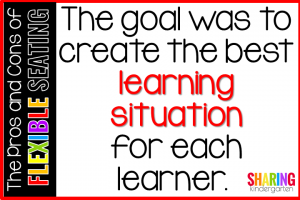
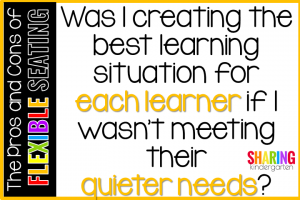
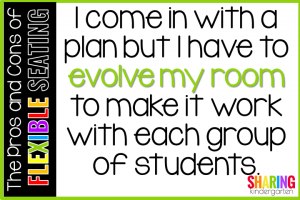
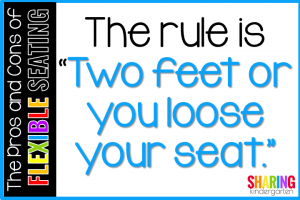
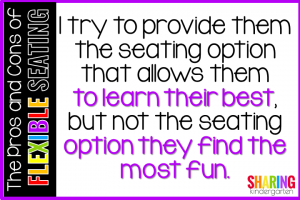
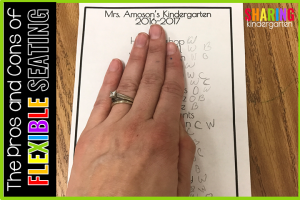
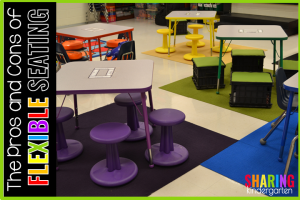

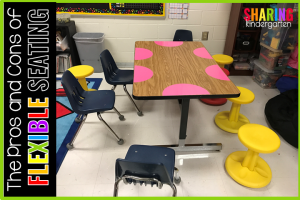
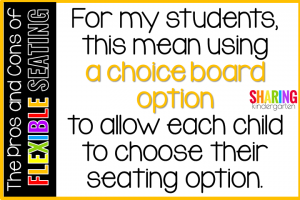
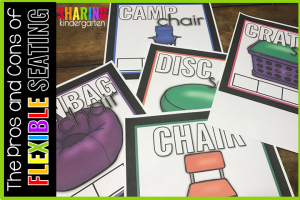
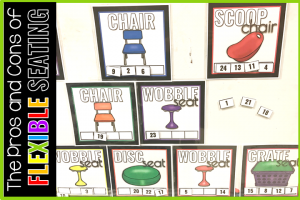
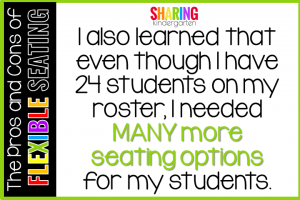
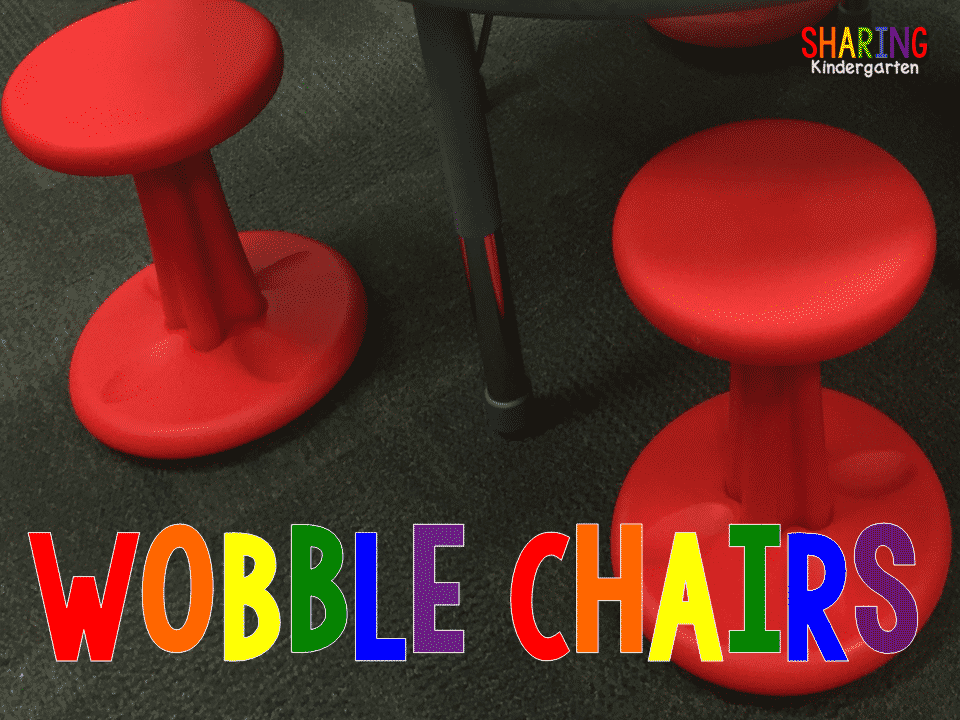
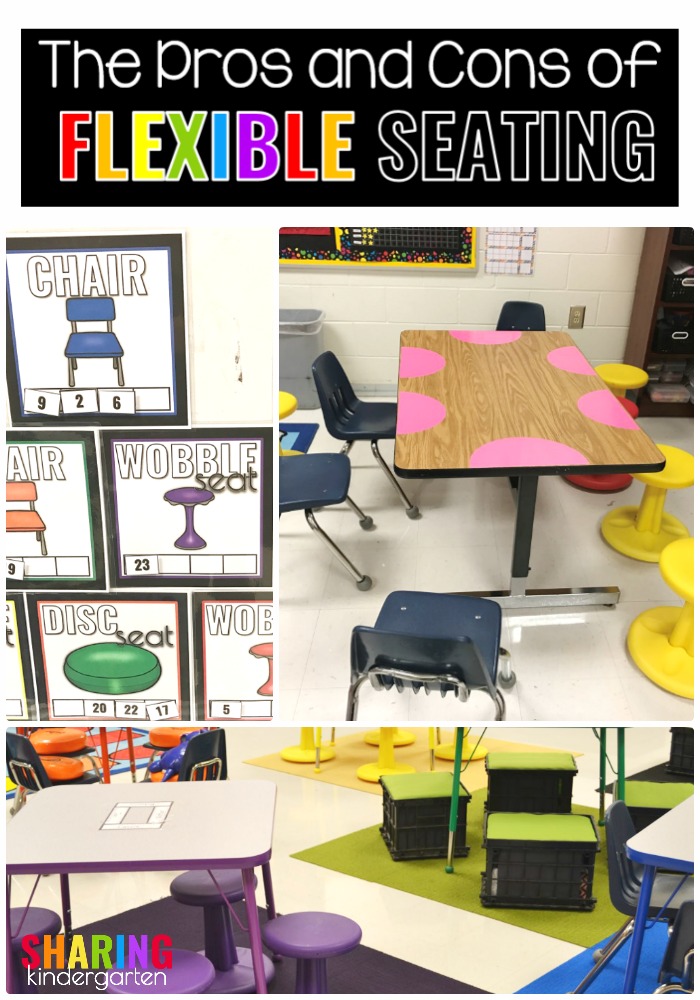
Where did you get the bold colored mats that are under the wobble chairs? I desperately need those! My students often drop crayons and they wind up getting ground onto the floor, making a huge mess that’s hard to clean up. Please help! Thanks!! Love your room!!